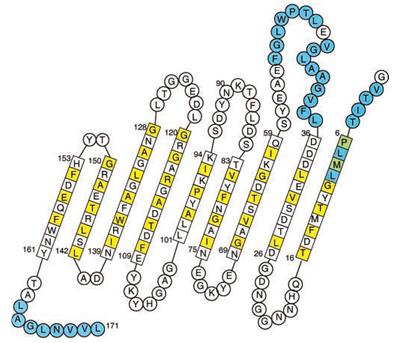Team:TU Delft/Project/solubility/alna
From 2010.igem.org
(New page: =AlnA Emulsifier Protein= Microorganisms that degrade hydrophobic compounds commonly produce emulsifiers. ''Acinetobacter radioresistens'' secretes such a so-called bioemulsan composed of ...) |
|||
| Line 5: | Line 5: | ||
AlnA has an amphipathic structure, which allows it to form micelles that accumulate at the interface between liquids of different polarities such as water and oil. This process is based upon the ability of biosurfactants to reduce surface tension, blocking the formation of hydrogen bridges and certain hydrophilic and hydrophobic interactions. The emulsifier helps to disperse the oil by emulsifying the oil, thus increasing the surface area for the growth of microorganisms on hydrocarbons (6-7). | AlnA has an amphipathic structure, which allows it to form micelles that accumulate at the interface between liquids of different polarities such as water and oil. This process is based upon the ability of biosurfactants to reduce surface tension, blocking the formation of hydrogen bridges and certain hydrophilic and hydrophobic interactions. The emulsifier helps to disperse the oil by emulsifying the oil, thus increasing the surface area for the growth of microorganisms on hydrocarbons (6-7). | ||
| + | |||
| + | '''References''' | ||
#'''Walzer, G., Rosenberg, E. and Ron, E.Z.''' (2006) The Acinetobacter outer membrane protein A (OmpA) is a secreted emulsifier. ''Environmental Microbiology.'' 8:1026-1032. | #'''Walzer, G., Rosenberg, E. and Ron, E.Z.''' (2006) The Acinetobacter outer membrane protein A (OmpA) is a secreted emulsifier. ''Environmental Microbiology.'' 8:1026-1032. | ||
Latest revision as of 13:26, 8 September 2010
AlnA Emulsifier Protein
Microorganisms that degrade hydrophobic compounds commonly produce emulsifiers. Acinetobacter radioresistens secretes such a so-called bioemulsan composed of a polysaccharide and three proteins (3). It was shown that AlnA (Accession no. AY033946) constitute most of the emulsifying activity (4-5). Escherichia coli contains an outer membrane protein A (OmpA) that has a high amino acid sequence homology to AlnA. However E. coli OmpA has no emulsifying activity. Comparison of the amino acid sequences of AlnA and E. coli OmpA revealed four hydrophobic regions in AlnA that are absent in E. coli OmpA (2). All these four hydrophobic regions have been shown to be crucial the emulsifying capacity of AlnA (2). Although AlnA is a membrane protein, it has been demonstrated that in several strains of Acinetobacter the protein is secreted (1).
AlnA has an amphipathic structure, which allows it to form micelles that accumulate at the interface between liquids of different polarities such as water and oil. This process is based upon the ability of biosurfactants to reduce surface tension, blocking the formation of hydrogen bridges and certain hydrophilic and hydrophobic interactions. The emulsifier helps to disperse the oil by emulsifying the oil, thus increasing the surface area for the growth of microorganisms on hydrocarbons (6-7).
References
- Walzer, G., Rosenberg, E. and Ron, E.Z. (2006) The Acinetobacter outer membrane protein A (OmpA) is a secreted emulsifier. Environmental Microbiology. 8:1026-1032.
- Toren, A., Segal, G., Ron, E.Z. and Rosenberg, E. (2002) Structure--function studies of the recombinant protein bioemulsifier AlnA. Environmental Microbiology. 4:257-261.
- Navon-Venezia, S., et al. (1995) Alasan, a new bioemulsifier from Acinetobacter radioresistens. Applied and Environmental Microbiology. 61:3240-3244.
- Toren, A., Orr, E., Paitan, Y., Ron, E.Z. and Rosenberg, E. (2002) The active component of the bioemulsifier alasan from Acinetobacter radioresistens KA53 is an OmpA-like protein. The Journal of Bacteriology. 184:165-170.
- Toren, A., Navon-Venezia, S., Ron, E.Z. and Rosenberg, E. (2001) Emulsifying activities of purified Alasan proteins from Acinetobacter radioresistens KA53. Applied and Environmental Microbiology. 67:1102-1106.
- Ron, E.Z. and Rosenberg, E. (2002) Biosurfactants and oil bioremediation. Current Opinion in Biotechnology. 13:249-252.
- Suresh Kumar, A., Mody, K. and Jha, B. (2007) Evaluation of biosurfactant/bioemulsifier production by a marine bacterium. Bulletin of Environmental Contamination and Toxicology. 79:617-621.
 "
"
